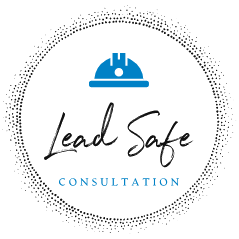In today’s business landscape, environmental sustainability isn’t just a trend—it’s a necessity. Environmental risks, if not addressed properly, can result in significant financial and reputational costs for your organization. From legal fines to operational inefficiencies, the long-term impact of environmental neglect can be severe. But the good news is, with the right strategies and proactive planning, these risks can be mitigated. Here are five key environmental risks that could be costing your business—and how to address them.
1. Non-Compliance with Environmental Regulations
What it is: Environmental laws and regulations are constantly evolving, and staying compliant is essential to avoiding penalties. Failing to adhere to local, national, or international environmental regulations can result in hefty fines, legal action, and damage to your company’s reputation.
How it costs your business:
- Fines and penalties: Government agencies impose fines for non-compliance with environmental regulations such as waste management, water usage, emissions limits, and more.
- Legal fees and litigation costs: Non-compliance could lead to lawsuits, legal fees, and settlement costs.
- Loss of business and credibility: A breach of environmental regulations can lead to the loss of contracts, clients, and investor trust.
How to mitigate this risk:
- Stay up to date with environmental regulations in your industry and region.
- Regularly audit your practices and ensure they comply with relevant laws.
- Consider getting ISO 14001 certification to implement a structured Environmental Management System (EMS) and ensure ongoing compliance.
2. Inefficient Resource Management
What it is: Inefficient use of resources such as water, energy, raw materials, and packaging can lead to wasted costs and unnecessary environmental impact. Inefficient processes result in more waste, higher energy bills, and increased consumption of natural resources.
How it costs your business:
- Increased operational costs: Wasting resources directly translates into higher costs for your business, including energy bills, raw material procurement, and disposal fees.
- Decreased profit margins: Inefficiencies reduce the profitability of your business, especially if your competitors are operating more sustainably and at a lower cost.
- Environmental impact: Excessive waste and resource consumption contribute to environmental degradation, leading to potential regulatory scrutiny.
How to mitigate this risk:
- Conduct an energy audit to identify and reduce inefficiencies.
- Implement lean manufacturing or resource-saving techniques to minimize waste.
- Invest in energy-efficient equipment and sustainable sourcing practices.
3. Environmental Liability from Waste Management Practices
What it is: Improper handling and disposal of waste, especially hazardous materials, pose significant environmental and financial risks. Whether it’s industrial waste, chemicals, or e-waste, improper disposal can lead to contamination of air, water, and soil.
How it costs your business:
- Cleanup and remediation costs: If your waste causes environmental damage, your business may be responsible for cleaning up the contamination, which can be expensive and time-consuming.
- Regulatory fines and penalties: Failure to dispose of waste correctly can result in fines from environmental authorities and legal liabilities.
- Reputation damage: Mishandling waste can severely tarnish your brand’s reputation, especially if it leads to environmental harm or public scrutiny.
How to mitigate this risk:
- Implement a comprehensive waste management plan that ensures proper segregation, recycling, and disposal of materials.
- Ensure hazardous waste is handled according to regulations, using licensed disposal contractors.
- Consider adopting a circular economy model by reducing waste generation and reusing materials wherever possible.
4. Carbon Emissions and Climate Change Impact
What it is: Carbon emissions and their contribution to climate change are a growing concern for businesses worldwide. Many organizations still operate in ways that generate a large carbon footprint, contributing to global warming and its associated risks, such as extreme weather events and shifting regulatory landscapes.
How it costs your business:
- Carbon tax and regulatory fees: Governments are increasingly imposing taxes or fees on carbon emissions, meaning businesses with large carbon footprints may face additional costs.
- Increased operational disruptions: Climate change leads to unpredictable weather patterns, potentially disrupting supply chains, operations, and infrastructure.
- Investor and consumer backlash: Investors and consumers are increasingly holding companies accountable for their environmental impact, which can affect your funding opportunities and market share.
How to mitigate this risk:
- Measure and reduce your carbon footprint by switching to renewable energy sources, improving energy efficiency, and reducing emissions.
- Set clear sustainability targets and make your business operations carbon-neutral if possible.
- Regularly review and improve your carbon reduction strategies to align with evolving regulations and consumer expectations.
5. Water Usage and Pollution Risks
What it is: Water is a critical resource for many industries, but excessive usage and contamination of water resources can lead to severe environmental and financial repercussions. Whether you’re in manufacturing, agriculture, or any other water-intensive industry, it’s essential to manage water use responsibly.
How it costs your business:
- Water scarcity: Overuse of water in areas facing shortages can result in operational disruptions and higher water costs.
- Pollution fines and cleanup: Polluting water bodies, whether through chemical discharges or untreated wastewater, can lead to hefty fines, cleanup costs, and legal liabilities.
- Reputation damage: Water pollution and irresponsible use can harm your brand’s reputation, especially with communities and consumers who value environmental responsibility.
How to mitigate this risk:
- Monitor and reduce water usage across your operations by installing water-saving technologies and reusing water where possible.
- Ensure proper treatment of wastewater before it is discharged into the environment.
- Explore sustainable water management practices to protect this essential resource for future generations.
Conclusion
Environmental risks are not just an external challenge—they can significantly impact your bottom line. From regulatory fines and legal costs to operational inefficiencies and reputational damage, the financial toll of ignoring environmental considerations is real and substantial. By identifying these risks and proactively addressing them through better resource management, compliance, and sustainability initiatives, you can protect your business and even find opportunities for growth.
At Lead Safe Consultancy, we provide expert guidance on environmental management and compliance to help businesses reduce risks, improve efficiency, and achieve sustainable success. Contact us today to learn how we can help you manage environmental risks and unlock new opportunities for growth.

